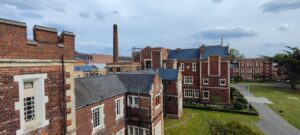Abandoned Hampshire: Pyestock NGTE Anechoic Chamber- Farnborough | Urbex

I now know the difference between ‘quiet’ and ‘silence’.
This explore was easily my personal favourite, it was not a pushover to reach, the risk of getting caught was high but exploring the building was absolutely worth it.
The explore in question: NGTE Pyestock – The National Gas Turbine Establishment.
Reaching this site proved to be a challenge of itself. To reach the site, we crossed MOD land, evaded being spotted as we passed close to the MOD buildings, worked our way through two steel mesh fences and one heavy duty steel one before finally finding an opening into the structure. The Anechoic Chamber is in process of being demolished and fences had recently been moved to allow diggers on site.
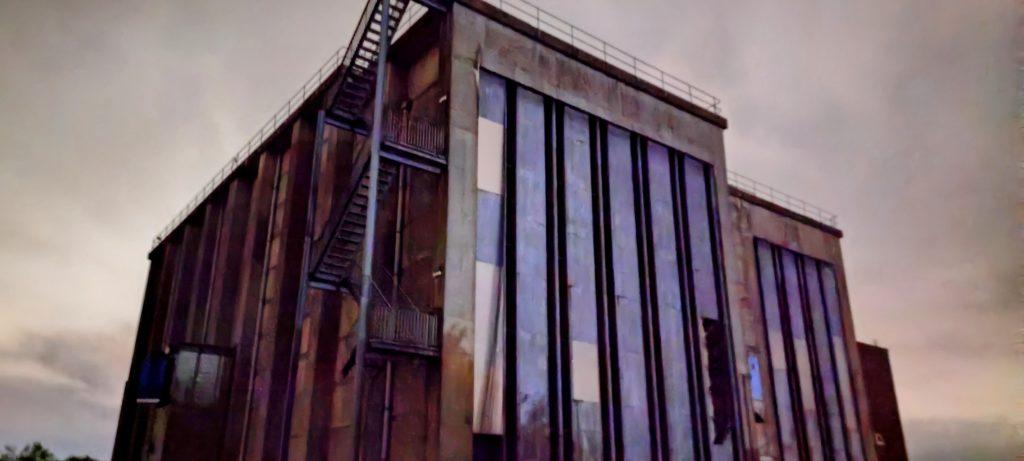
If we weren’t already on edge, a fellow urban explorer who had visited the site earlier in the day had tripped a motion sensor. This resulted in them being chased off site by security. Guards on duty were clearly on high alert. Any entrances previously made for us would likely be sealed up too. Our only plus was we were going under the cover of darkness and it would be easy to stay hidden in the dark, provided our lights didn’t draw any attention…
After parking, our small parade of five ventured through the woods, part of the MOD site, until we reached the first fence of three. We carefully peered along the fence, finding a gap and shuffling through it.
As we proceeded, through the trees on our right we could see the beams of MOD floodlights shining through the trees. We crept single file along the fence, being careful to stay covered by the dark. The MOD site was about a hundred or so metres away from us as we trekked closer to the testing facility and it would’ve been easy to give ourselves away with how close we were.
See more abandoned places in Hampshire
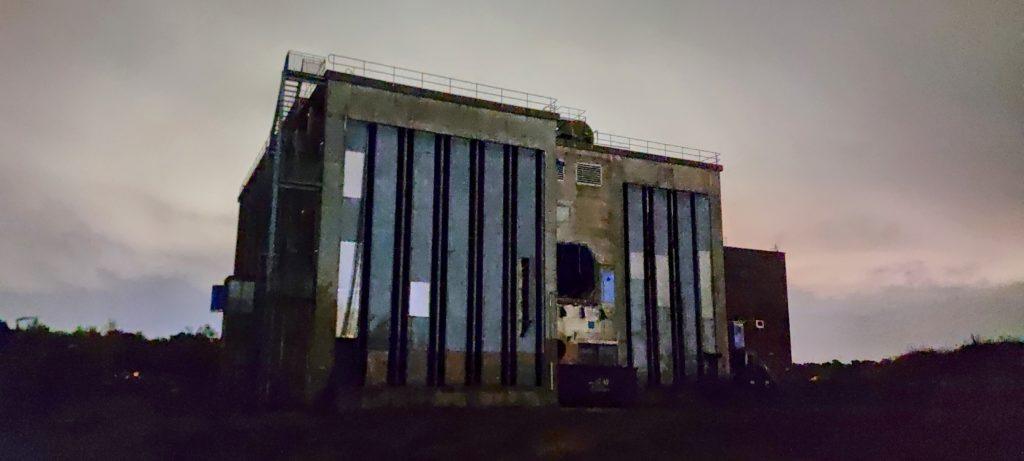
Eventually, we spotted the Pyestock facility. It loomed out of the dark against the illuminated clouds with an apocalyptic appearance to it. The Anechoic Chamber is the last building standing and it used to make up a much larger site of the NGTE. The surrounding land was open and devoid of trees or any kind of cover, we were in clear open view of security buildings which shone floodlights out into the dark.
The National Gas Turbine Establishment
The National Gas Turbine Establishment (NGTE) was a large industrial site used to develop and test jet engines. It opened in the 1940s and was expanded until its closure in 2000. From the 1950s to the 1970s it was the largest facility of its kind in Europe. Pyestock was operational throughout the Cold War and the V bomber, Harrier and Tornado engines were tested on site. Due to its secluded position, surrounded by woodland, captured Soviet engines were examined on the premises.
The Anechoic Chamber that still stands today has a 10,000 cubic metre chamber for noise testing, with a wind tunnel and noise-cancelling insulation. This allowed engines to be tested in flight conditions, identifying the source of sound waves from the jets.
Reaching the Anechoic Chamber
After being quiet and stealthy in the woods, we raced out of the woods to the second fence. We studied it and realised there was a small opening that would allow us to slip through one by one. After getting through the fence, we turned our lights off and charged across the open space, being careful not to roll our ankles in the slightly uneven surface.
We hit our final obstacle: the last fence, made out of riveted steel, this was not going to be a pushover. We slowly and methodically worked our way along the fence, trying to spot an opening. We first went left along the fence, but had to shut off our lights after spotting a small hut that had movement within it. We slowly worked our way back in the opposite direction to avoid being seen. Eventually, we wound up at the wide open front of the building with no fence. Although the fence was gone, there were plenty of diggers and excavators poised ready to rip the building to shreds. Fortunately, no-one operating them… yet.
That wasn’t to say they hadn’t already been at work, it was evident large portions of the building had already been ripped away before the rest of the building was razed.
We methodically crept past the looming machines, hugging the riveted fence as we did so. We were careful not to make any sudden moves as we knew this was the spot where the urban explorer had tripped the alarm earlier that day. Slowly working our way along the fence, we saw the opening our fellow explorer told us to look out for. One by one, we darted in.
Inside Pyestock Anechoic Chamber
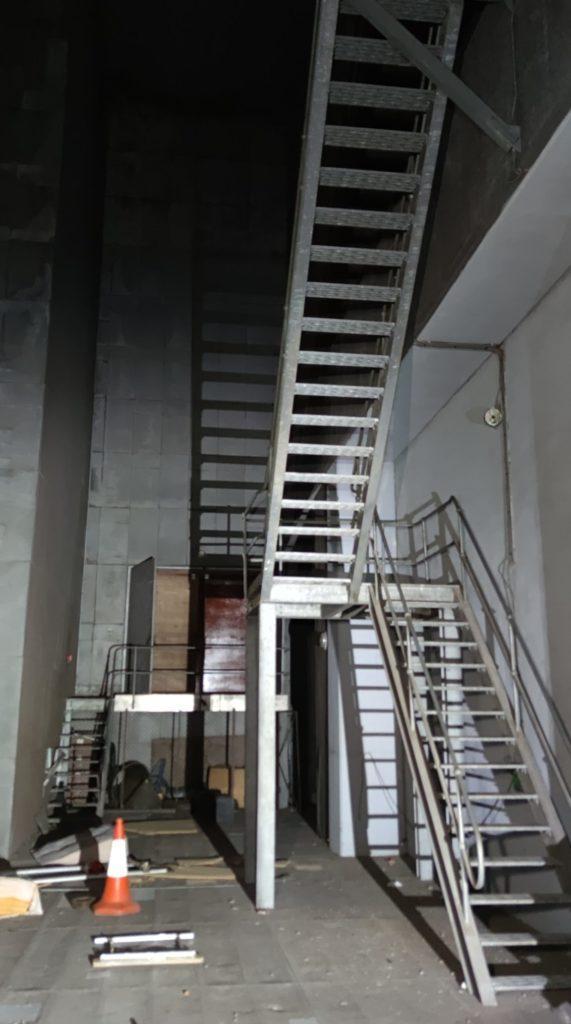

This is when this explore became my favourite.
Outside, it’s quiet. The only noises that pierce the night are the nearby road and the occasional plane that lands nearby. The breeze gently rustling the nearby woods could also be noted. All these noises were just general background noises, nothing anyone would really register. For a calm Sunday evening, it was as you would expect: quiet.
Inside: There. Is. Silence.
This silence is indescribable, the quiet you take for granted outside fades away to nothing. Where the only noises you can hear are your feet on the ground, your clothes rustling, your breathing and the ringing in your ears. This building was made to be quiet, but it has gone beyond that. It absorbs all the noises you make, even a simple hand clap doesn’t sound right without an echo. It’s fun to imagine what tests were conducted in this building, but the fact all external sound is blocked out, makes this a one of a kind place at such an immense scale.
It would be easy to replicate this silence sensation in a recording studio, but it is almost impossible to replicate this level of silence in an enormous empty building that should echo any sound made within it for at least two minutes.
Most explores I’ve done have been in spaces that aren’t massive, but entering the building, you notice immediately that this building is cavernous. The soundproofing is immediately evident and almost disorientating. It’s also relatively tidy, lots of derelict places succumb to poor treatment from explorers, but this place hasn’t really fallen to that, the worst was the occasional bit of litter and a traffic cone immediately inside. Climbing the next set of steps in front is us, you can see a giant cylindrical tunnel in the wall with a diameter of about eight metres. A shoddily-made climbing platform allowed us to climb up into it and to walk through it to where the main sound-proof chamber lay.
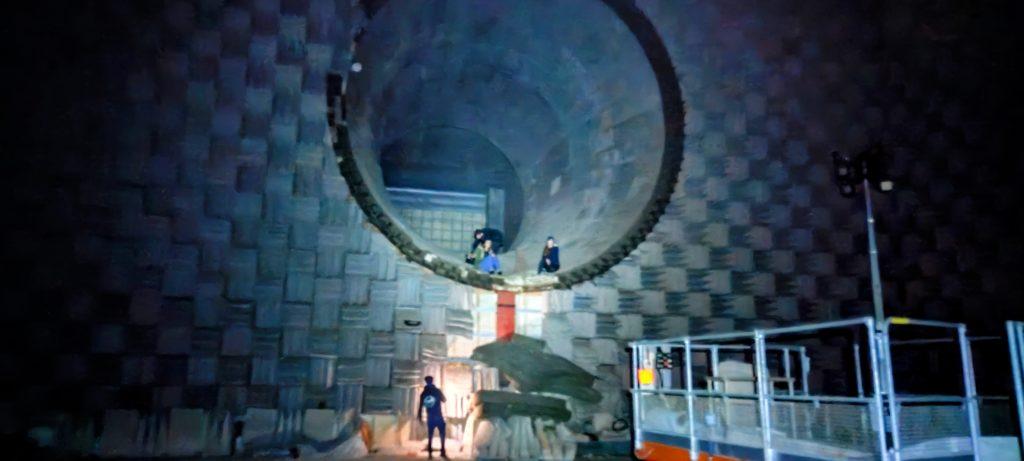
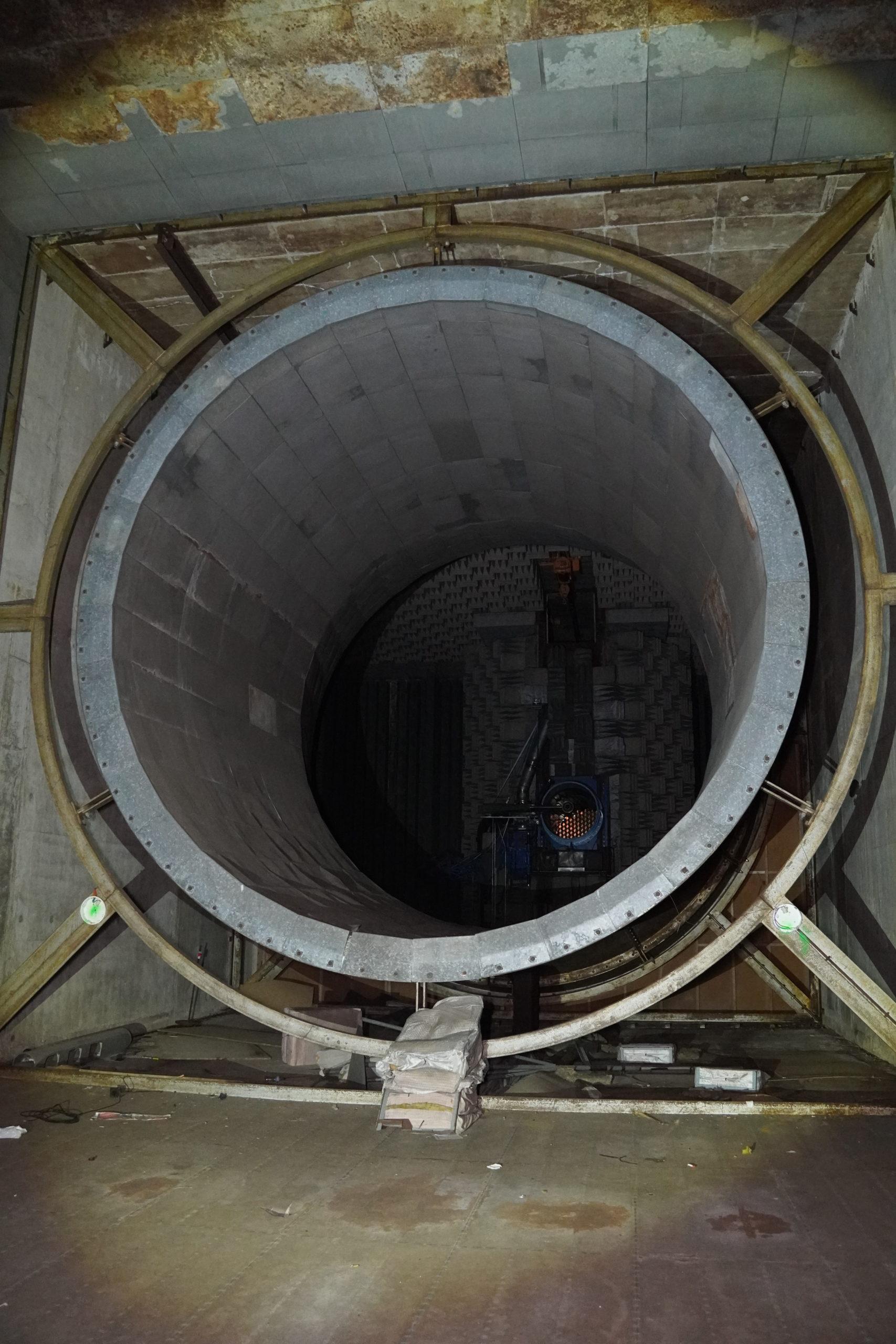
The main chamber room is vast and takes up most of the remaining building. Huge triangular shaped foam protrudes from the walls and ceiling. Despite the building being abandoned, this room still does its job perfectly: this room is absolutely silent. The only gap in this soundproofing is yet another large tunnel on the opposite wall near the ceiling, through it, you can see the night sky and the glow of the MOD floodlights, peering into the gaping chamber.
Two of our team dropped down into the room from the tunnel we stood in. The drop down to the main room floor is much further than the climb into the tunnel and a pile of foam below the drop supports you as you fall. Climbing back into the tunnel will be tricky on the foam but not impossible.
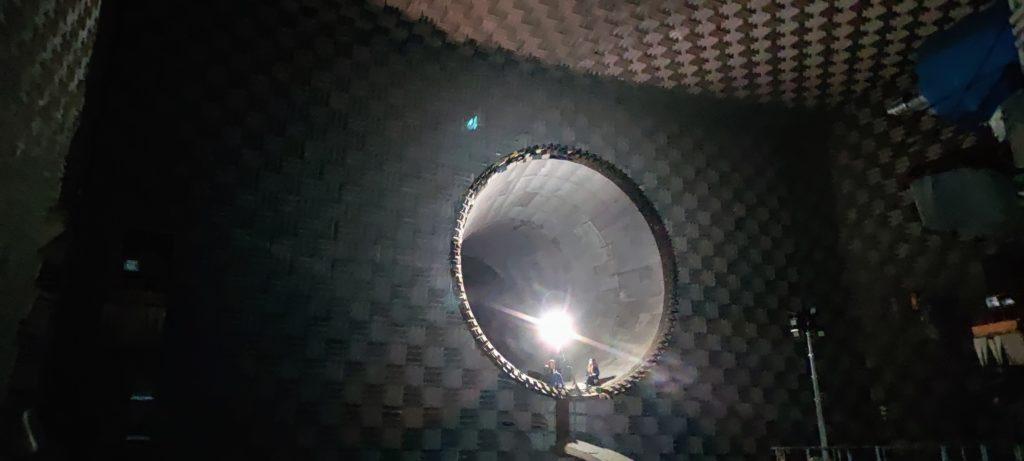
It’s worth noting: the two team members who dropped into the main room are not exceptionally tall or short. But in the pictures, you can see just how spacious this room is as it dwarfs them and makes them appear insignificant to the sheer size of the place. The two team members said that noise behaved differently within that space. I was across the room from them and whispering directly towards them, one of the guys on the floor described the sensation of hearing it as: ‘It was as if he was whispering into a microphone and we had the headset on. It was so clear’.
Looking out into this broad open space, you can understand how this building was primarily used: for testing the noise of jet engines during the Cold War.

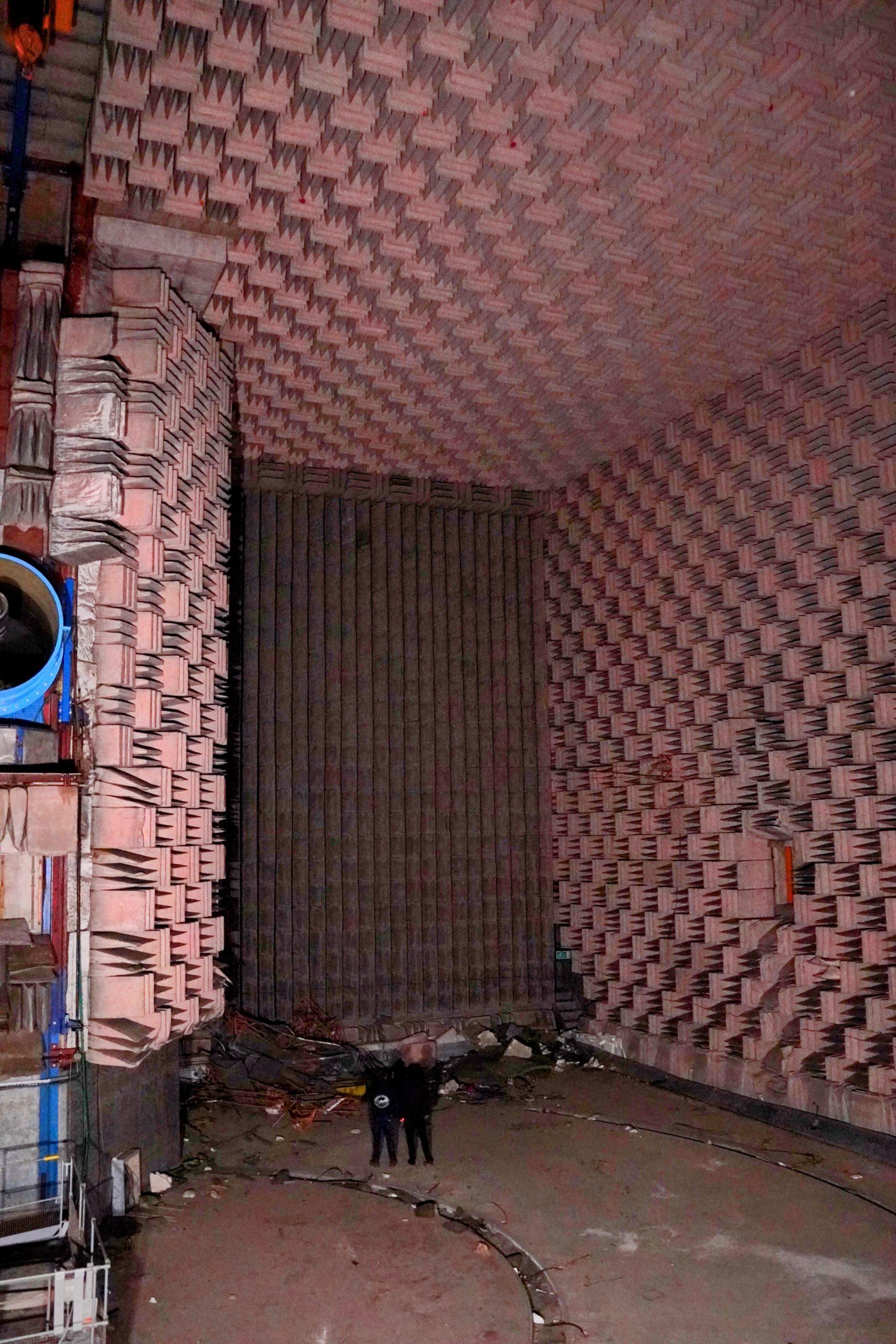
The tunnel where you can see out to the world outside was the point where engines were mounted, the engine would pull in air from outside and exhaust it into the sound-proof room. The exhaust from the engine would go into the sound-proof chamber before going through the giant tunnel that we climbed into, which turns out to be: an exhaust duct.
Below the giant exhaust duct are a series of sound-proofed ‘slits’ in a wall that are wide enough to walk through sideways, behind these are another series of ‘slits’, but wide enough to walk through normally. These ‘slits’ absorbed high frequency and low frequency vibrations. Just behind the wide ‘slits’ are a series of giant fans in the ceiling, these twelve fans used to be extraction fans for the giant volumes of air being pulled into the building by the jet engines.
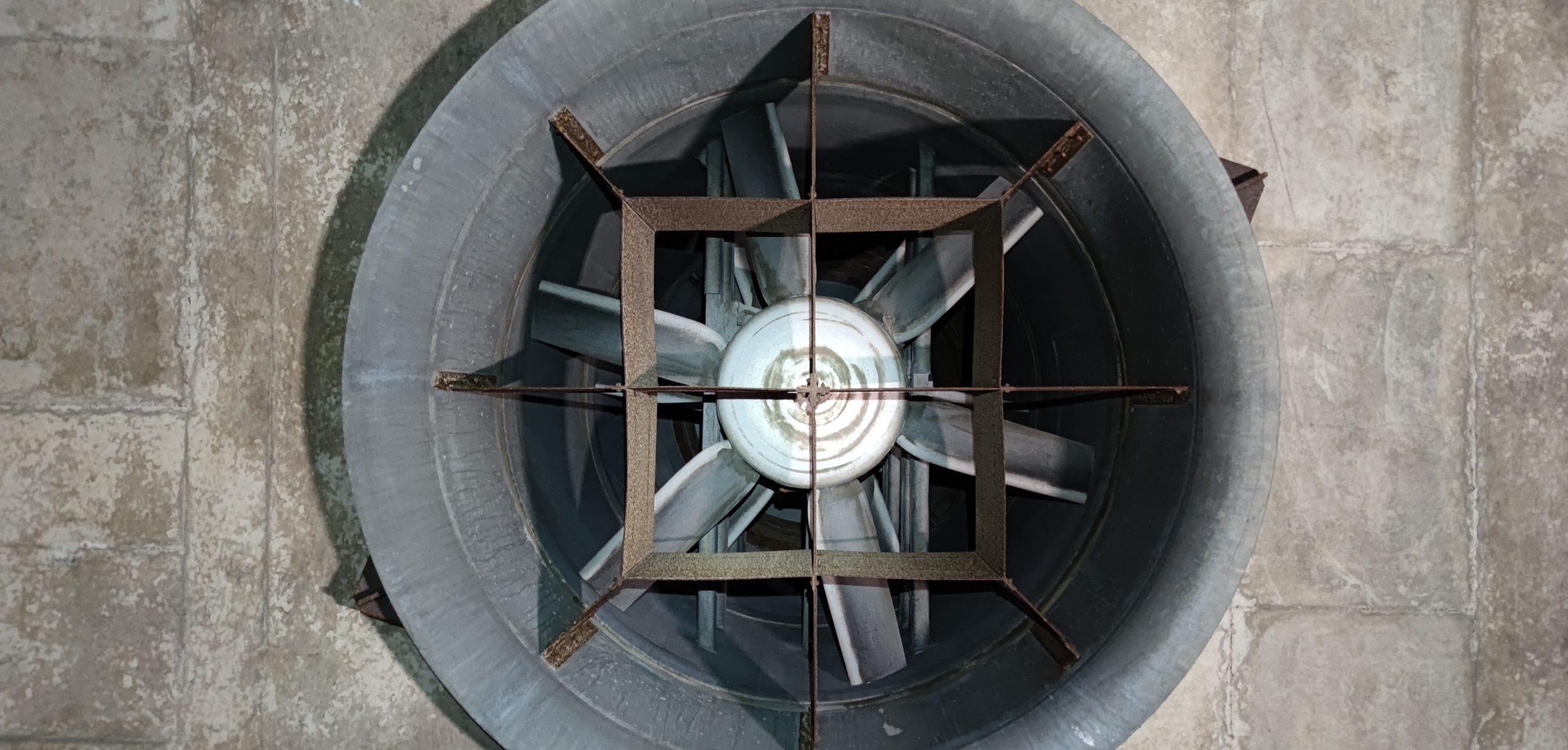
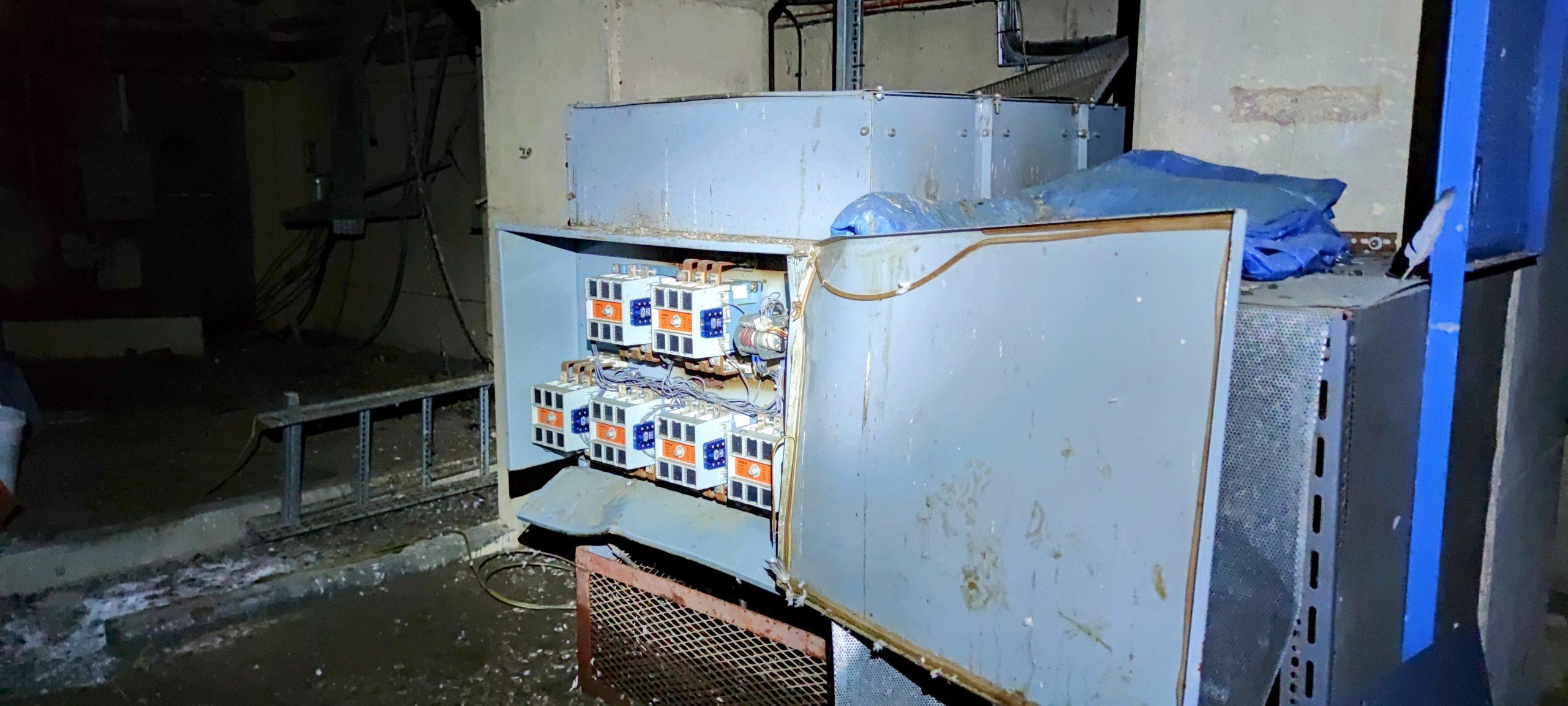
At this point, some of you may be wondering what the point is of putting such a loud machine like a plane engine in a room designed to be totally and absolutely silent. The whole point was to test how quiet an engine could be during a time of spying and nuclear fears. Testing an engine outside was simply not possible as sound would bounce off of nearby objects, including the floor, rendering tests obsolete. Whereas this testing facility could absorb all noise for accurate results and comfortably accommodate all equipment needed to apply any and all tests to the plane engine to find out how effective it would be for espionage.

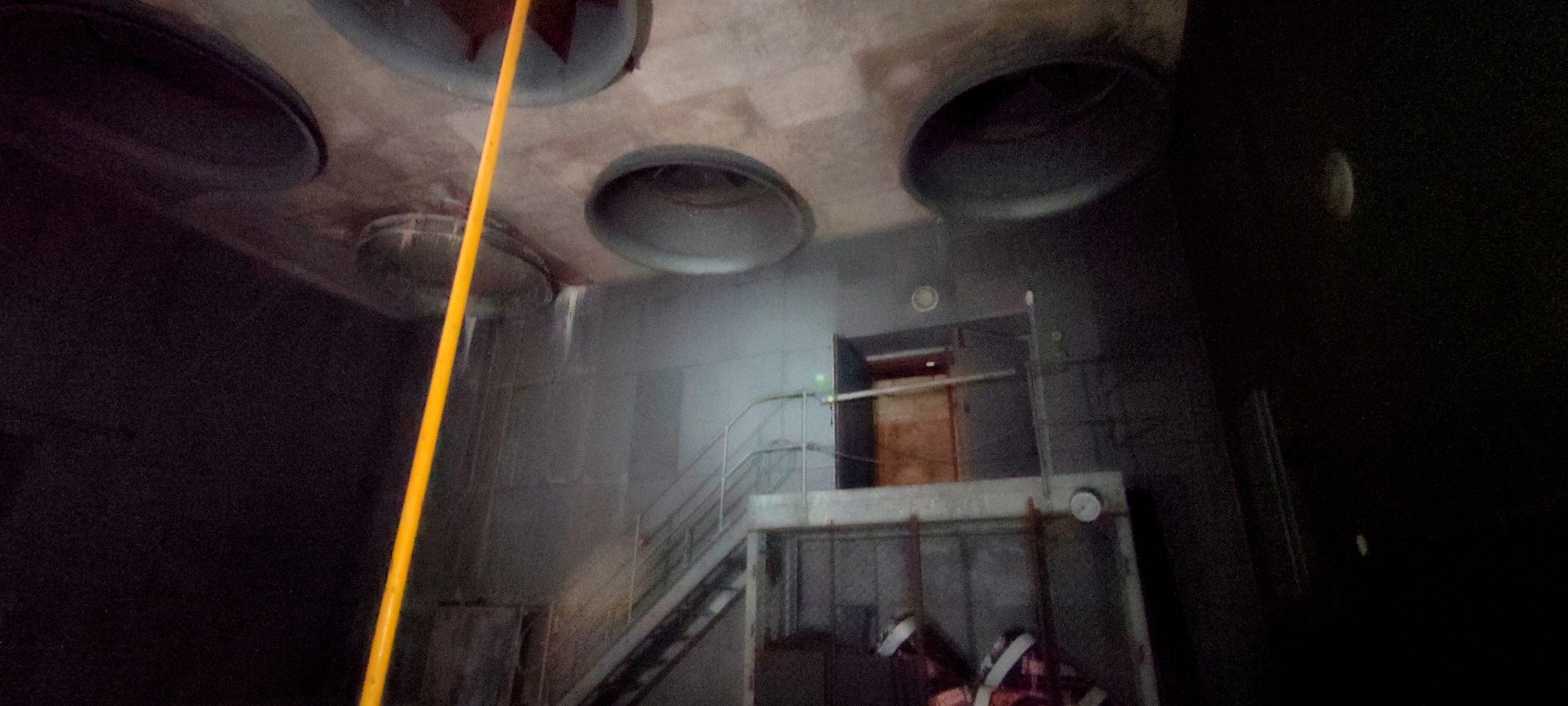
Coming back to our explore though, almost ironically: a noise shatters the silence. A noise not generated by anyone in the room but a clanging coming from outside, through the jet engine tunnel and into the soundproof room. Oddly enough: those of us on the turbine exhaust duct heard it, but the other two members, due to their position away from the turbine mount, did not. The sound was absorbed before it reached them. However, someone was clearly outside and we didn’t want to stick around to find out who it was.
Hauling our teammates off the floor of the chamber and back onto the turbine exhaust duct, we quickly scurried out of the building and back into the open quiet of the night. The quiet outside was almost deafening when compared to the absolute silence mere moments before. We stealthily moved back through the fences and under the cover of the woods.
In my opinion, it is a shame this building is due to be destroyed to make way for houses. I understand why but it doesn’t mean I have to like it. This building is fascinating in the way it works, I’m ecstatic I got to experience this place before it gets razed and I doubt I’ll ever be able to experience an explore like this again. But if I do, I cannot wait for that day.





